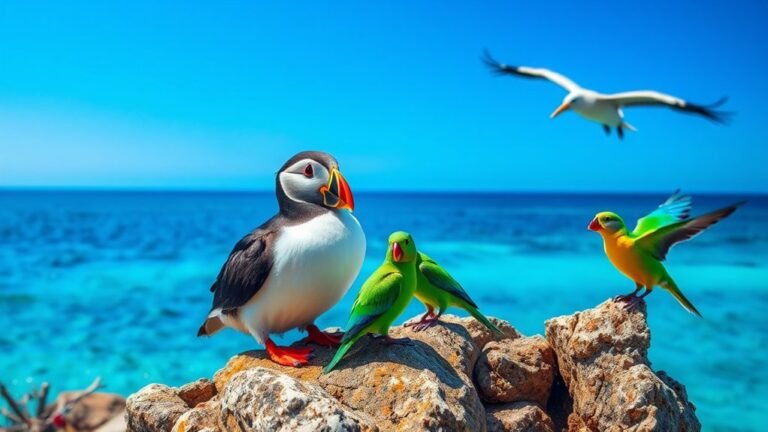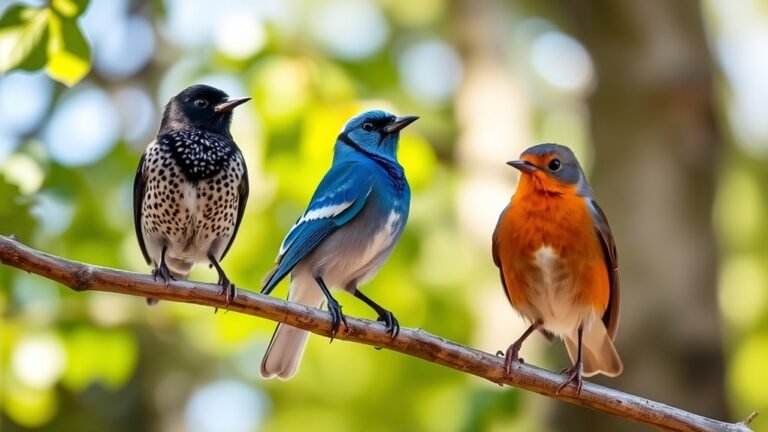Do Owls Eat Cats? Exploring Their Diets
Owls are fascinating birds known for hunting at night. They mostly eat small animals like mice, other small mammals, birds, and insects. This brings up a question: do owls eat cats?
Generally, owls do not see domestic cats as food. This is because cats are usually bigger than most of their common prey. However, in cities or areas where small animals are less available, an owl might try to catch a small kitten if it's alone and the opportunity arises.
It's important to know that while they might hunt small pets, it doesn't happen often. Owls prefer easier targets. So, if you have a cat, it's a good idea to keep them safe, especially at night.
Understanding how owls hunt can help us know more about their behavior and how they fit in our neighborhoods. Remember, keeping your cat indoors at night can help keep them safe from all kinds of dangers, including owls.
A Quick Overview
Owls do not usually eat domestic cats. Cats are often too big and smart for owls to catch easily.
However, in cities, some owls might go after smaller pets if food is hard to find. Most of the time, owls hunt small animals like mice and voles instead of larger ones like cats.
If you have a domestic cat, it's wise to take precautions, especially at dusk and dawn when owls are most active. Learning about the types of owls in your area can help you understand any risks to your pets.
The Basics of Owl Diets

Owls are amazing hunters with different diets that show how adaptable they are. What they eat changes based on their species and where they live. Owls are opportunistic hunters, which means they catch whatever prey is available. They mostly go after small mammals, birds, and insects. Some owls eat specific types of prey, while others have a wider menu.
When owls hunt, they use their sharp talons and excellent night vision to catch their food. They're skilled at finding prey in the dark.
Learning about what owls eat helps us appreciate them more and shows how important they're for keeping nature in balance. So next time you see an owl, remember how they play a key role in the ecosystem!
Common Prey of Owls

Owls are amazing hunters. They usually hunt at night and like to eat small animals. Their favorite meals include mice, voles, and shrews. These animals are easy to find, so owls often go after them.
But owls can eat other things too! They might catch birds, insects, and even some reptiles. This shows how flexible they're when it comes to food.
What owls eat can change based on where they live and the time of year. This helps them survive in different places.
Do Owls Target Domestic Cats?

Do Owls Hunt Domestic Cats?
Owls are great hunters. They usually eat small animals like mice and birds. But you might wonder if they think about domestic cats as their next meal.
In general, domestic cats, especially the bigger ones, aren't the usual target for owls. Cats can be strong and clever, and they just don't fit into what owls usually hunt.
However, some owls might act differently based on where they live. For example, in cities where food is harder to find, some owls might see smaller pets as food.
To keep your cat safe, watch them when they're outside, especially during the times when owls are most active, like at dusk and dawn. Knowing what kinds of owls live nearby can also help you protect your furry friend.
In short, while owls mainly hunt smaller animals, it's good to be careful and look out for your cat.
Hunting Techniques of Owls
Owls are amazing hunters, and they use different methods to catch their food. These hunting techniques show how well they can see at night and move quietly.
Here are some of the ways owls hunt:
- Sit-and-wait: Owls sit still on a branch. They listen and look carefully for any movement.
- Quartering: They fly close to the ground in a zigzag pattern. This helps them check for prey as they fly.
- Pouncing: Owls have strong talons. When they spot prey, they dive down quickly to grab it.
- Group hunting: Some owls work together to catch prey. This teamwork can help them be more successful.
These techniques help owls thrive in their surroundings. They're skilled at finding food in the dark!
Size and Species of Owls
Owls come in many sizes and types. This shows how they can live in different places. For example, some owls, like the tiny elf owl, weigh less than an ounce. Others, like the big Eurasian eagle owl, can weigh up to 10 pounds. Each type of owl has special features that help it survive where it lives.
Some owls, such as barn owls, are great at hunting in open fields. In contrast, others prefer to stay in thick forests.
The size of an owl impacts what it eats and how it hunts. Learning about the different kinds of owls helps you appreciate these amazing birds. Each type plays an important role in its environment. Knowing this variety helps connect you more with nature.
The Role of Owls in the Ecosystem
Owls are fascinating creatures with over 200 different kinds around the world. They play a big role in keeping nature balanced. Here's how they help:
- Pest Control: Owls hunt rodents and insects. This helps keep their numbers in check and prevents them from becoming too many.
- Food Source: Larger birds and other predators eat owls. This helps keep the food chain strong and healthy.
- Health Indicators: When you see owls in an area, it usually means that the environment is healthy. This makes conservation efforts important to help protect them.
- Scientific Research: Learning about owls helps scientists understand how animals and nature work together.
Owls aren't just cool to watch; they're important to our world! They're excellent hunters and help keep nature in balance.
Plus, studying them can teach us a lot about how animals adapt to their homes. So next time you see an owl, remember how much they contribute to our ecosystem!
Myth vs. Reality: Owls and Cats
People often think owls and cats are enemies, but that's not really true. Owls mostly hunt small animals like mice and bugs. They don't usually go after cats.
There are many stories about owls that make them seem more dangerous than they really are. Cats are pretty smart and quick, which helps them get away from danger. Most indoor cats don't even see owls.
If we look at the facts, it's clear that owls and cats can live together without problems. Instead of being scared of owls, we can appreciate how they help the environment.
It's important to think about and understand what really puts our cats at risk, like traffic or larger animals.
Other Predators of Cats
When you think about keeping your cat safe, remember there are many dangers besides owls.
Here are some other animals that could hurt your kitty:
- Big cats: In some places, big cats like cougars and bobcats can attack small pets, including cats.
- Foxes: Foxes are sneaky hunters. They like to chase small animals and might go after your cat.
- Birds of prey: Hawks and eagles can see cats as a meal, especially if you have a small kitten.
- Dogs: Some aggressive or wild dogs can seriously threaten your cat's safety.
Knowing about these risks can help you keep your furry friend safe and happy.
Impact of Urbanization on Owl Diets
Urban areas are changing what owls eat. This affects how they hunt and find food. In cities, owls catch more small animals, like mice and birds. These animals live in parks and gardens, where they're easy for owls to find.
Human activities break up the natural homes of many animals. Some rodents now live in urban spaces where owls can hunt them. City lights and sounds also change when and how owls look for food. They often hunt more at night and take advantage of what's available.
Overall, cities create new challenges and opportunities for owls. These birds are good at using what they've to adapt to life in urban places.
It's interesting to see how they change their hunting habits to survive!
Conclusion: The Intriguing Relationship Between Owls and Cats
Owls and cats are different types of animals, but their relationship is interesting and worth talking about. Let's look at how they interact and what that means for both.
- How Owls Affect Cats: Owls hunt at night. This can change the number of cats around because they might become more careful or even leave an area if owls are nearby.
- Cats at Risk: Small cats and kittens are especially at risk from owls. They should be watched over to keep them safe from predators like owls.
- Nature's Balance: Owls help control the population of small animals like mice. When these animals are fewer, it can change what cats have to eat.
- Cats Adjust: Cats learn to deal with dangers in their environment. They pay attention to owls and other threats to stay safe.
This relationship shows how animals affect each other in nature.
It's important for pet owners and those who love wildlife to understand these connections.
Frequently Asked Questions
Can Owls Eat Humans or Larger Animals?
Owls usually keep their distance from humans. They are not interested in hunting us. Most owls, especially the bigger ones, like to catch small animals. They often hunt mice, rats, and other small birds. Humans are just too big for them to see as food. So, when it comes to owls, you don't have to worry about them treating you like a snack!
What Are the Primary Threats to Owl Populations?
Owl populations face many challenges. The biggest threats are habitat loss and human development. Trees are cut down, and buildings go up, making it hard for owls to find homes and food. This affects their ability to nest and raise their young. To help owls, we need to understand these issues better. By learning about what they face, we can work together to protect them.
How Do Urban Environments Affect Owl Hunting Behavior?
In cities, owls change how they hunt. They use artificial lights from street lamps and buildings to see better at night. These lights help them spot food more easily.
Owls also take advantage of human activity. They hunt near parks, garbage areas, and places with lots of noise. This way, they find more to eat in the busy city.
What Other Animals Are Commonly Preyed Upon by Owls?
Owls are known for their hunting skills. They often catch mice, but they also hunt small birds. This includes tiny sparrows and bigger songbirds. Owls are very adaptable and can find food in many different places.
Besides mice and birds, owls also eat other animals. They may hunt insects, small mammals, and even small reptiles. This varied diet helps them survive in different locations. So, whether it's a mouse or a small rabbit, owls use their skills to find food that keeps them healthy and strong.
Do Owls Have Any Natural Predators Themselves?
Owls don't have many natural enemies. However, bigger birds like eagles and hawks can sometimes go after them. Other nighttime hunters, like raccoons or larger owls, might also compete with them for food. This competition can make it harder for owls to find meals and stay safe.

Luna is the passionate founder and author of Birds and You, a website dedicated to sharing her love for birds with fellow enthusiasts. Through her engaging articles and guides, she aims to educate and inspire others to explore the fascinating world of birds. When she’s not writing, you can find Luna observing birds in their natural habitats or sharing beautiful bird photography on Pinterest. Join her on this journey to celebrate and protect our feathered friends!







